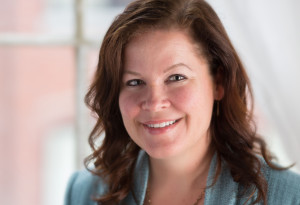What Would Nature Do? – Part II
Aug 26 2014
This article was originally published in the Summer 2014 RSF Quarterly.
As an investor, I have similar questions. What if some of my investments have non-dollar-based paybacks? What if I had as much information about real environmental outcomes and the value they represent, as I do about security prices? How could I create an investment portfolio where growth is a result of strong development and real value created in the world, not an aim in and of itself? Like many investors, I’m moving through the spectrum of these “what if” scenarios, though the answers are not simple, and are ever-evolving.
Another principle of biomimicry is to adapt to changing conditions: natural systems thrive in context, demonstrating flexibility over different spans of time and across different operating conditions. Here again, there is helpful wisdom for a small ranch owner. Which expenses (whether time, money, or other resources) are seasonal in nature? Which might grow or shrink over time as the work progresses, with healthier land and changing herds? Choosing a static, one-size-fits-all financial tool (like a lump-sum conventional loan) would leave big gaps in different seasons and different circumstances; clearly something more adaptable (like a line of credit, or a series of smaller financial supports) might be a better match.
Again, as an investor, this concept of adaptability raises parallel questions. How can I embrace an adaptable investment approach, without feeling a constant sense of churning? How can I consider my own changing context, as my life, family, and community continue to evolve?
Alignment with the principles of natural systems is a serious and vital challenge for investors and investees alike. But, underneath all of the discussions of structure and mechanics there is a deeper layer of alignment that is essential. When we look to nature as model, mentor, measure, and muse, we first need to reconnect our own lives to the natural world around us. This reconnection is a simple idea, but not easy to implement, even for those of us who are deeply devoted to our natural environment. I believe that this deeper reconnection involves three central imperatives: reframe, refrain, and reclaim.
First, we need to reframe our own position with respect to the natural world. Humans are a delightful, unique, and relatively small part of the natural world, though our impact upon it might be outsized. Reorienting as citizens of the natural world, a small subset, rather than rulers of our environment, is essential.
Second, we need to refrain from our never-ending doing. To really learn from nature, we need to quiet our own cleverness. We need to sit in stillness and to observe without desperately seeking immediate answers or insights, just as is practiced in many contemplative practices. For those of us who have been trained since birth to be as quick and clever as humanly possible, this can be an uphill battle – but it is a worthy and necessary endeavor.
Once those first two conditions are met, we have the chance to reclaim. To realign investing with the real world, the world it was originally intended to serve. To develop new approaches that match multi-dimensional, relational, long-term goals. To seek true profit, fair profit, rather than a fleeting positive number on today’s trading reports. To practice investing as vocation, as profession – not just a business.
Nature is not just a place to escape our professional lives; it is the source of deep wisdom that can improve our designs and decision-making. With biomimicry-based approaches, we need not choose between environmental and financial stewardship. Both are part of a healthy investing ecosystem, and both can be supported through life’s principles. This is investing in its most fundamental form: resilient, regenerative, and reconnected. This is the true nature of investing.
Katherine Collins is author of The Nature of Investing: Resilient Investment Strategies Through Biomimicry. She is also Founder and CEO of Honeybee Capital, a research firm dedicated to the pursuit of optimal investment decision-making. Katherine has previously served in numerous capacities at Fidelity Management and Research Company. After a career in traditional equity management, she set out to re-integrate her investment philosophy with the broader world, traveling as a pilgrim and volunteer, earning her MTS degree at Harvard Divinity School, and studying the natural world as guide for investing in a valuable and integrated way, beneficial to our communities and world.
